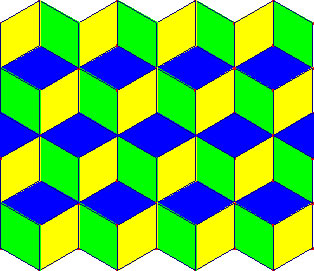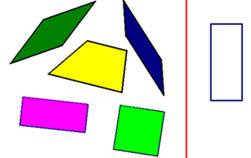STUDYING QUADRILATERALS WITH CABRI |
A DGS like CABRI offers a good chance to explore geometrical properties working on given figures. If you have CABRI II plus, you can use these materials: Without CABRI, you can use these CabriJava files:
WHAT DISTINGUISHES A RECTANGLE FROM AN OTHER QUADRILATERAL?
But CABRI is also an environment where pupils have the chance of coming across mathematical concepts working freely on their own projects. The problem is that pupils spontaneously use CABRI as a graphic tool. If they are asked to build a determinate polygon, for example, they connect segments by eye and don't think about the geometrical properties. Pupils should understand that the perception often
leads to wrong deductions. For example, a square is always a "true" square?
An other task was to produce themselves drawings
dragging resistant. This is a complex operation, because it involves
drawing circles, lines and segments, then hiding the parts you
won't to see in the final picture.
|
|||||


